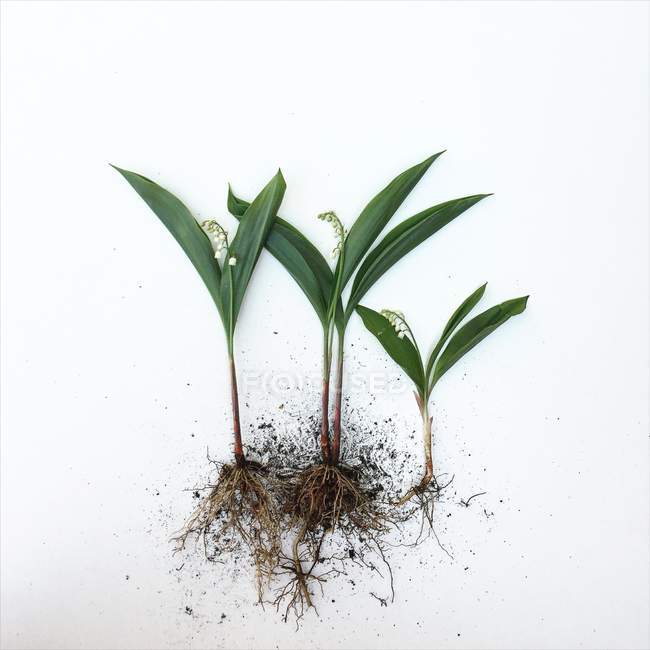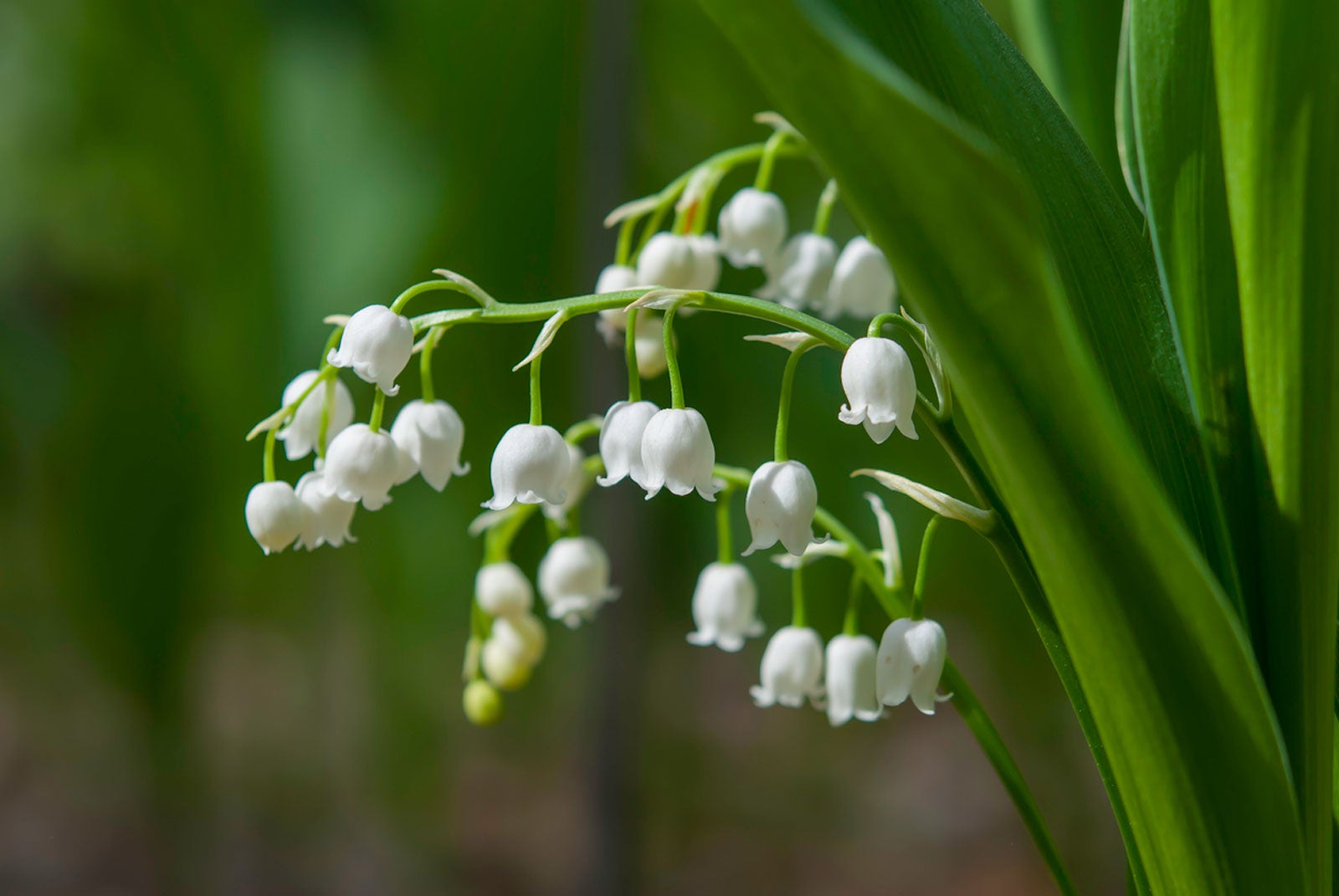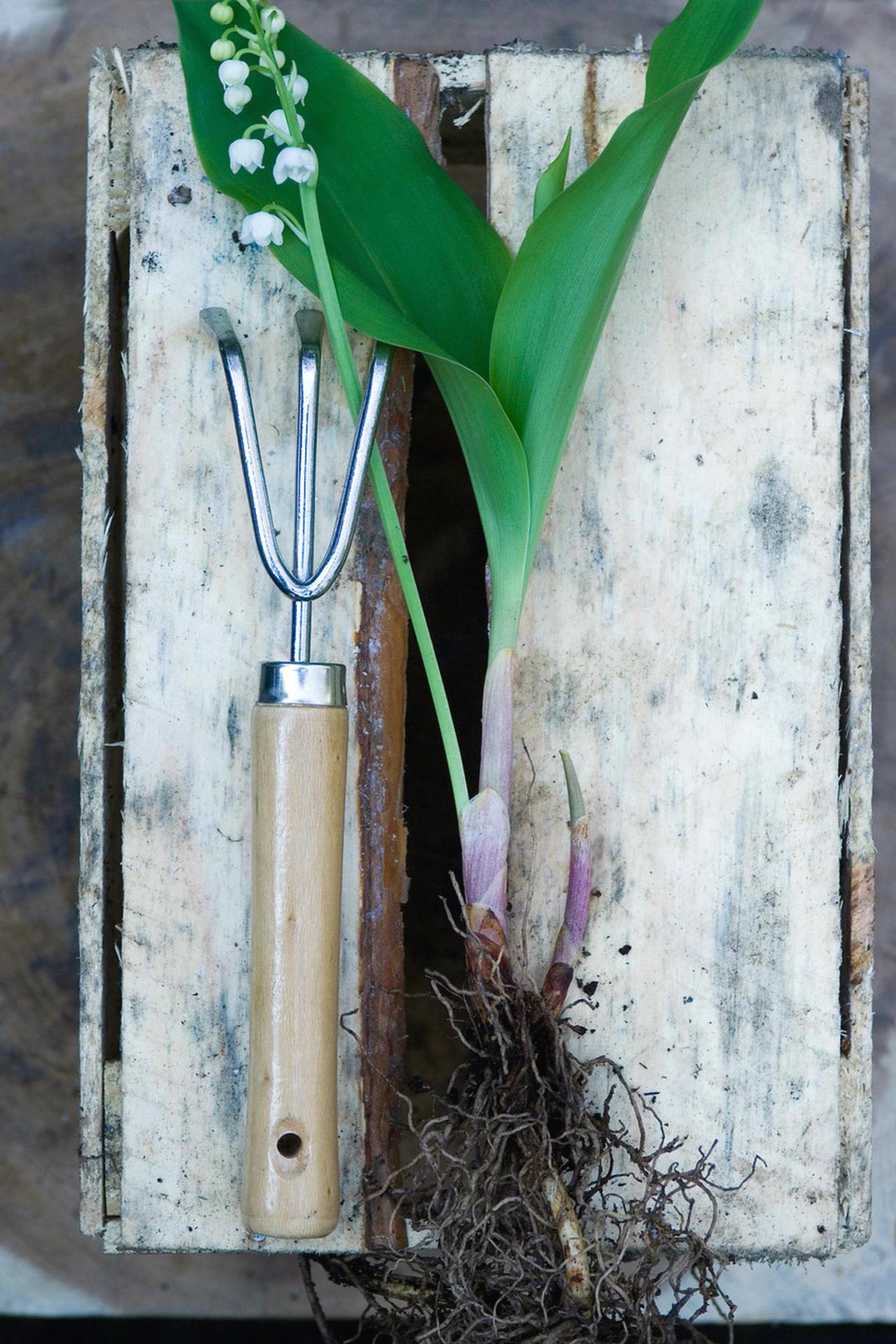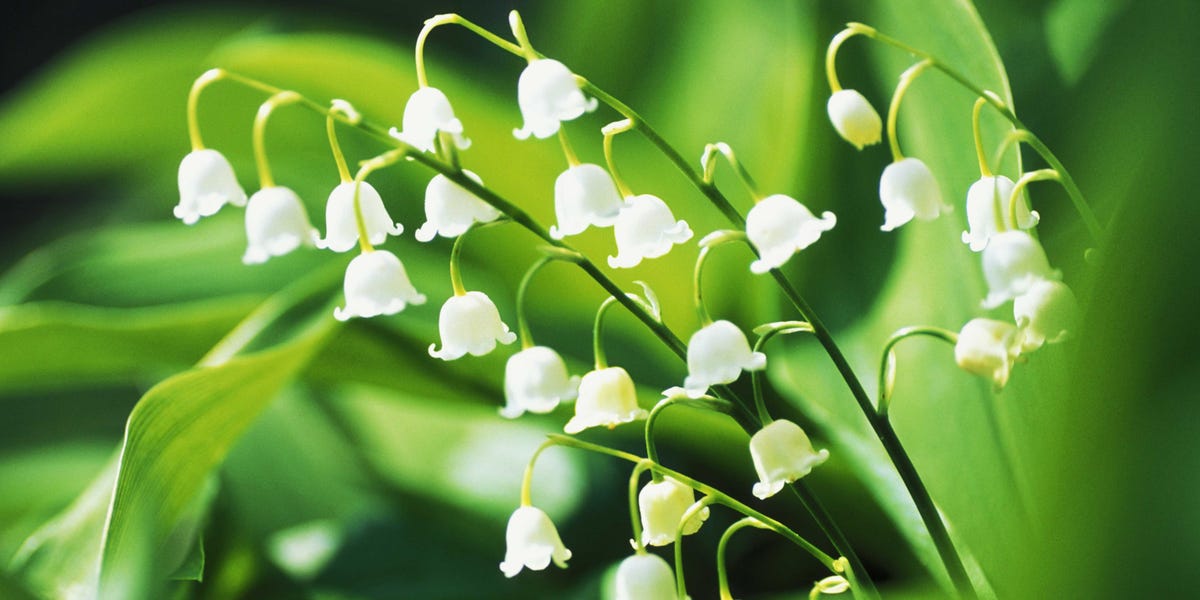What Makes Lily of the Valley Roots So Special
The lily of the valley plant, Convallaria majalis, has been a revered and iconic symbol in various cultures for centuries. Its delicate white flowers and red berries have captivated the hearts of many, but it’s the roots of this plant that hold a special significance. Lily of the valley roots have been highly valued and used in various applications, from traditional medicine to modern herbalism, due to their unique properties and potential health benefits. The roots contain a distinct combination of cardiac glycosides, flavonoids, and saponins, which have been found to have potential uses in treating heart conditions, anxiety, and insomnia.
How to Harvest and Prepare Lily of the Valley Roots for Use
Harvesting lily of the valley roots requires care and attention to detail to ensure sustainability and optimal quality. The best time to harvest the roots is in the fall, after the plant has finished blooming. Dig up the roots carefully, making sure to avoid damaging them. Wash the roots gently with cold water to remove any dirt or debris. To dry the roots, tie them in small bunches and hang them upside down in a warm, dry, dark place. Once dry, the roots can be stored in airtight containers for later use.
When preparing lily of the valley roots for use in herbal remedies, crafts, or other purposes, it’s essential to follow proper safety protocols. Wear gloves and protective eyewear when handling the roots, as they can cause skin irritation and allergic reactions in some individuals. Grind or crush the dried roots into a fine powder using a mortar and pestle or a coffee grinder. This powder can be used to make teas, tinctures, or infusions, or as an ingredient in crafts and potpourri.
The Medicinal Properties of Lily of the Valley Roots
Lily of the valley roots have been prized for their medicinal properties for centuries. The roots contain a unique combination of cardiac glycosides, flavonoids, and saponins, which are responsible for their potential health benefits. The cardiac glycosides, in particular, have been found to have a positive effect on the heart, helping to regulate heartbeat and reduce blood pressure. Flavonoids, on the other hand, have antioxidant properties, which can help protect against cell damage and reduce inflammation. Saponins, meanwhile, have been shown to have anti-inflammatory and antimicrobial properties, making them useful in treating a range of conditions.
The medicinal properties of lily of the valley roots make them a valuable ingredient in herbal remedies. They have been used to treat a variety of heart conditions, including atrial fibrillation, congestive heart failure, and high blood pressure. Additionally, lily of the valley roots have been used to treat anxiety, insomnia, and other nervous disorders. The roots have also been used in traditional medicine to treat digestive issues, such as constipation and diarrhea.
Research has also suggested that lily of the valley roots may have anti-cancer properties, although more studies are needed to confirm this. The antioxidant and anti-inflammatory properties of the roots may also make them useful in treating conditions such as arthritis, diabetes, and Alzheimer’s disease. Overall, the medicinal properties of lily of the valley roots make them a valuable ingredient in herbal medicine, with a range of potential health benefits.
Lily of the Valley Roots in Traditional Medicine and Folk Remedies
Lily of the valley roots have been used in traditional medicine and folk remedies for centuries, particularly in Europe and Asia. The roots were highly valued for their medicinal properties, which were believed to have a range of health benefits. In traditional medicine, lily of the valley roots were used to treat a variety of heart conditions, including atrial fibrillation, congestive heart failure, and high blood pressure. The roots were also used to treat anxiety, insomnia, and other nervous disorders.
In folk medicine, lily of the valley roots were used in a range of remedies, including teas, tinctures, and infusions. The roots were believed to have a calming effect on the nervous system, making them useful in treating anxiety and insomnia. They were also used to treat digestive issues, such as constipation and diarrhea. In some cultures, lily of the valley roots were used in rituals and ceremonies to promote good luck, purity, and innocence.
The traditional uses of lily of the valley roots are still valued today, with many herbalists and natural health practitioners incorporating them into their remedies. The roots are often used in combination with other herbs to create powerful remedies for a range of health conditions. For example, lily of the valley roots may be combined with hawthorn and motherwort to create a remedy for heart conditions. They may also be combined with valerian and chamomile to create a remedy for anxiety and insomnia.
Despite the long history of use, lily of the valley roots are still not widely recognized for their medicinal properties. However, as interest in natural health and herbalism continues to grow, the roots are gaining recognition as a valuable ingredient in traditional medicine and folk remedies.
Cultivating Lily of the Valley: Tips for Growing Your Own
Lily of the valley plants are relatively easy to grow, making them a great addition to any garden or indoor space. To cultivate lily of the valley, it’s essential to provide the right conditions for the plant to thrive. Here are some tips to get you started:
Soil Requirements: Lily of the valley plants prefer well-draining soil that is rich in organic matter. A mix of peat moss, compost, and perlite can provide the ideal conditions for growth. The soil pH should be slightly acidic to neutral, ranging from 6.0 to 7.0.
Light and Water Needs: Lily of the valley plants prefer partial shade to full shade, making them ideal for woodland gardens or indoor spaces with limited natural light. Water the plants regularly, but avoid overwatering, which can lead to root rot. The soil should be kept consistently moist, but not waterlogged.
Propagation Methods: Lily of the valley plants can be propagated through division, seed, or rhizome cuttings. Division is the most common method, where the rhizome is divided into sections, each with at least one growing eye. Plant the sections in the spring or fall, and keep the soil consistently moist.
Pruning and Maintenance: Lily of the valley plants require regular pruning to maintain their shape and promote healthy growth. Remove any dead or damaged leaves and stems, and cut back the plant to the ground after flowering. This will encourage new growth and prevent the plant from becoming leggy.
Harvesting Lily of the Valley Roots: To harvest lily of the valley roots, wait until the plant has finished flowering and the foliage has died back. Carefully dig up the rhizome, making sure not to damage the roots. Wash the roots thoroughly, and dry them for use in herbal remedies, crafts, or other purposes.
By following these tips, you can successfully cultivate lily of the valley plants and harvest their valuable roots. With proper care and attention, lily of the valley plants can thrive and provide a bountiful harvest of lily of the valley roots.
Lily of the Valley Roots in Modern Herbalism: New Research and Applications
In recent years, lily of the valley roots have gained attention in modern herbalism for their potential uses in promoting health and wellness. Research has focused on the roots’ antioxidant and anti-inflammatory properties, which may have a range of benefits for cardiovascular health, anxiety, and insomnia.
Studies have shown that lily of the valley roots contain a unique combination of flavonoids, saponins, and cardiac glycosides, which may help to reduce inflammation and oxidative stress in the body. These properties make the roots a promising ingredient in the development of natural remedies for heart conditions, such as atrial fibrillation and congestive heart failure.
In addition to their cardiovascular benefits, lily of the valley roots have been found to have anxiolytic and sedative effects, making them a potential natural remedy for anxiety and insomnia. The roots’ antioxidant properties may also help to protect against neurodegenerative diseases, such as Alzheimer’s and Parkinson’s.
Modern herbalists are exploring the use of lily of the valley roots in combination with other herbs to create powerful remedies for a range of health conditions. For example, the roots may be combined with hawthorn and motherwort to create a remedy for heart conditions, or with valerian and chamomile to create a remedy for anxiety and insomnia.
As research continues to uncover the potential benefits of lily of the valley roots, it is likely that we will see an increase in their use in modern herbalism. With their rich history, cultural significance, and potential health benefits, lily of the valley roots are an exciting area of study and application in the field of herbalism.
The Cultural Significance of Lily of the Valley Roots in History and Mythology
Lily of the valley roots have a rich cultural and mythological significance that spans centuries and continents. In many cultures, the plant is associated with purity, innocence, and good luck, making it a popular symbol in art, literature, and folklore.
In medieval Europe, lily of the valley roots were believed to have magical properties, and were used in potions and spells to promote love, fertility, and protection. The plant was also associated with the Virgin Mary, and was often depicted in religious art and literature as a symbol of her purity and innocence.
In French folklore, lily of the valley roots are said to bring good luck and happiness to those who possess them. The plant is also associated with the month of May, and is often used in May Day celebrations and rituals to promote fertility and abundance.
In some cultures, lily of the valley roots are believed to have a spiritual significance, and are used in shamanic rituals to promote healing, protection, and spiritual growth. The plant is said to have a powerful energy that can help to balance the body, mind, and spirit, and is often used in meditation and prayer to promote inner peace and harmony.
Today, lily of the valley roots continue to be a popular symbol in art, literature, and culture. The plant is often used in wedding bouquets and decorations to promote love and fertility, and is also used in herbal remedies and crafts to promote health and wellness.
Despite their cultural and mythological significance, lily of the valley roots remain a humble and understated plant. They are often overlooked in favor of more showy flowers and herbs, but their quiet beauty and powerful properties make them a true treasure of the natural world.
Conclusion: Unlocking the Full Potential of Lily of the Valley Roots
In conclusion, lily of the valley roots are a truly remarkable plant with a rich history, cultural significance, and potential health benefits. From their traditional uses in folk medicine to their modern applications in herbalism, lily of the valley roots have proven to be a versatile and valuable resource.
By understanding the medicinal properties of lily of the valley roots, including their cardiac glycosides, flavonoids, and saponins, we can unlock their full potential for promoting health and wellness. Whether used in herbal remedies, crafts, or other purposes, lily of the valley roots offer a natural and effective way to improve our lives.
As we continue to explore the uses and benefits of lily of the valley roots, it is essential to remember the importance of sustainable harvesting and cultivation practices. By respecting the natural world and preserving the integrity of the plant, we can ensure that lily of the valley roots remain a valuable resource for generations to come.
Ultimately, the significance of lily of the valley roots lies not only in their potential health benefits but also in their cultural and mythological importance. By appreciating the rich history and symbolism surrounding this plant, we can deepen our connection with nature and tap into the wisdom of our ancestors.
As we conclude this comprehensive guide to lily of the valley roots, we encourage readers to explore and appreciate the versatility of this remarkable plant. Whether you are a seasoned herbalist, a curious beginner, or simply someone who appreciates the beauty of nature, lily of the valley roots have something to offer.








